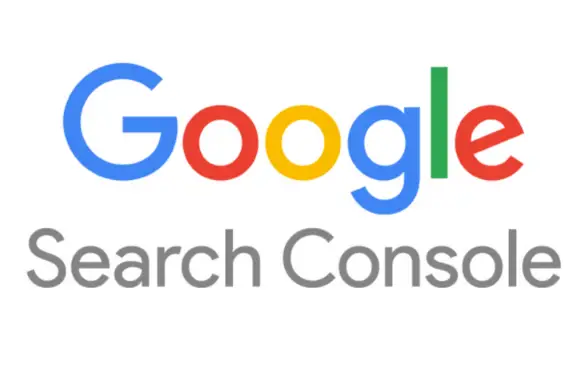1. Google Search Console: What Is It and Why Does It Matter?
You can get direct feedback on how your website shows up in search results with Google Search Console, a free tool from Google. It displays the search terms that generate traffic, the way Google indexes your content, and any technical problems that could prevent people from seeing your pages. It’s critical for monitoring performance, identifying issues, and making data-driven SEO decisions.
- CoreBytes for Search Engine Landing
- Google Search Console (GSC) gives you the advantage. At Relzion, we support data-driven decision-making.
2. Configuring and Validating Your Website
A. Select the Type of Property You Want:
Domain property (suggested): includes all protocols and subdomains, confirmed by DNS.
URL-prefix property: keeps track of a specific address, such as https://, and can be confirmed by your domain provider, Google Analytics/Tag Manager, HTML files, or meta tags.
Search Engine Land offers digital marketing courses in Hyderabad.
B. Confirm Ownership:
DNS method: click Verify in Google Search Console (GSC) after adding the TXT record to your domain settings. Confirmation could take anywhere from a few minutes to 48 hours.
CoreBytes for Search Engine Landing
URL-prefix verification using Google-integrated techniques, HTML file uploads, or meta tags. If it doesn’t work, troubleshoot by making sure the placement is correct.
Landing in Search Engines
3. Including Your Sitemap
A sitemap, typically sitemap.xml, makes it easier for Google to crawl your website, especially complex or updated sites.
Hyderabad Digital Marketing Course

How to Send in a Submission:
Select “Sitemaps” from the menu on the left in GSC.
Type in the sitemap path, such as sitemap.xml.
Check for errors or “Success” after clicking “Submit.”
A properly submitted sitemap indicates which pages Google views and speeds up indexing.
Hyderabad Digital Marketing Course
4. Using Important Reports and Tools

A. Report on Performance You can view this dashboard:
Clicks: the number of visitors derived from the search.
Impressions: the frequency of your website’s appearance.
Click-through rate, or average CTR.
Average Position: your search engine ranking.
CoreBytes for Search Engine Landing
These can be grouped by time, device, country, page, and query. It assists you in identifying your strengths and areas for improvement.
Beneficial Tips Read the article about organic search impressions: How to track & improve
B. Tool for URL Inspection
Paste a URL to view structured data, mobile usability, when it was last crawled, indexation status, and other information. Asking Google to re-index is another way to test live indexing.
YouTube Summaries for Search Engine Land
C. Index Coverage (Pages)
This lists the pages that are indexed or not, along with an explanation of the reasons (e.g., 404 errors or noindex tags). After a problem has been fixed, use “Validate Fix” to see which URLs are impacted.
Landing in Search Engines
D. Page Experience & Essential Web Elements
Under Experience, you’ll discover:
Performance indicators such as responsiveness, visual stability, and loading speed are examples of core web vitals.

To check core web vitals using PageSpeed Insight
Mobile Usability identifies issues related to navigation on mobile devices.
HTTPS security verifies the security of your website.
Hyderabad Digital Marketing Course
Both search ranking and user satisfaction may benefit from improvements made here.
E. Improvements and Reports on Structured Data
These reports display valid items and errors in structured data (FAQ, breadcrumbs, products, etc.). Resolve problems and confirm to show up as rich search results.
Hyderabad Digital Marketing Course
Landing in Search Engines
F. The Links Report
provides information on anchor text, most-linked pages, and internal and external links. This information is essential for comprehending how Google views the authority of your website.
Hyderabad Digital Marketing Course
G. Manual Actions & Security
notifies you of manual penalties, hacking attempts, or spammy activity. It’s a quick method to identify significant problems affecting visibility.
dependablesoft.net
Landing in Search Engines
5. Advanced Applications & Useful Advice (2025)

A. Capabilities for Real-Time Monitoring
You can submit sitemaps, examine URLs, and get real-time performance information from Google.
CoreBytes
B. Apply Regex Filters
Use regular expressions to filter search terms or pages to identify trends, multiple URLs, or content patterns; this is particularly helpful for large websites.
CoreBytes
C. Integrate GA4 and GSC
By connecting GSC and GA4, you can get a 360-degree view of performance and see how users act once they arrive at your website.
Landing in Search Engines
D. Export Information for More Comprehensive Understanding
To examine keywords, pages, and performance over time, export Google Search Console (GSC) reports into CSV or Google Sheets and use filters or pivot tables.
CoreBytes
E. Use SEO Tools to Set Up Alerts
To stay proactive, use tools like Ahrefs or SEMrush to get alerts for crawl problems, ranking changes, or backlink loss.
Landing in Search Engines
F. Index of Cleanup Bloat
To keep your crawl budget low, isolate low-value or duplicate pages and block indexation using noindex tags or robot control.
Landing in Search Engines
G. Indexing Track Videos
Google Search Console (GSC) indicates whether embedded videos are correctly indexed. The video indexing report allows you to view impressions and fix indexing errors.
Technologies in Coalition
6. Relzion’s Action Plan & Best Practices
Establish Google Search Console (GSC) as a regular practice. Visit frequently to identify mistakes early and take appropriate action.
Pay Attention to Impactful Pages: Examine important pages, such as the home page, pricing page, or important posts, on a regular basis.
Fix with Velocity: To expedite re-crawling, use “Validate Fix” after issues have been resolved.
Boost Visibility: To optimise search visibility, improve titles, descriptions, structured data, and usability.
Use GSC as Your SEO Compass: Let actual data, not conjecture, determine your optimisation priorities.
7. Suggested Video Instruction
Watch this Google Search Console (GSC) walkthrough for a thorough and visual tutorial (beginner to advanced):





